Exposure to welding or thermally generated fume is a serious health and safety issue facing today's manufacturers. Health risks range from mild illnesses and sickness to long-term conditions like cancer. Uncontrolled weld fume impacts factories by infiltrating machinery causing downtime and loss of productivity. Protecting workers from fume, dust and smoke common in welding processes is best accomplished by capturing it at the source to prevent it from entering the worker breathing zone. Benefits from a properly designed fume control solution include:
Nederman is the world's largest provider of fume extraction and control equipment and a total solution provide, whether the application is small or large, simple or complex, manual or automated - Nederman has a solution to meet your specific needs for workplace clean air.
Solution range - Broad range of fume extraction solutions making Nederman a one-stop-shop for workplace clean air.
Industry expertise - Decades of experience with thousands of successful installations around the world.
Quality and reliability - Welders around the world trust our products every day to protect them from harmful weld fume.
Turn-key approach - From design, commissioning, installation and service, Nederman is a total solution provider.
Sustainability - Nederman is committed to delivering clean air solutions to our customers in a sustainable way.
Nederman products are equipped with technology that improves performance and scalable to meet today's needs and future demands.
Effective fume capture - Nederman extraction arms, hoods, controls and filters all work together to ensure effective capture and control of weld fume.
Advanced filter media - Nanofiber filter media is ideally suited for fume applications with high efficiency and excellent filter cleaning, resulting in extended filter life, reduced energy consumption and fewer emissions.
Insight controls - The MCP SmartFilter includes easy-to-use touch screen controls that are IIoT ready and enable remote monitoring technology that increases productivity, improves safety and reduces operating costs.
Control of exposure to welding fumes can usually be achieved with the help of extraction and ventilation. The choice of technique depends on the application. The aim is to capture the welding fumes as close to the source as possible. This protects not only the welder but also other workers. Nederman systems are designed to extract welding smoke from a number of workstations but are also used for general housekeeping. Factors that influence which fume capture method include the types of parts being welded, exposure limits, operator method, fume generation method and complexity.
Applications:
Fume Generation Rates - Different welding processes and materials result in higher fume generation rates. For example, higher welding duty cycle, welding with flux or oily/dirty surfaces will have higher fume concentrations and will need a more robust solution.
Number of Welders - When you have multiple welders or machines generating fume, it may be more economical to have a central fume extraction system engineered to fit your specific needs. This could be applied to multiple welding robots or support several welder workstations.
Wherever it is a viable solution, it has been proven that extraction at source is the most efficient method of capturing and removing welding and similar fumes. Using this method, the risk of the welder or operator being subject to hazardous fumes is minimized. Welding torches with integrated extraction allow the welder to work over big areas as well as inside constructions. It is also reducing heating and cooling costs by reducing the amount of heated / cooled air extracted from the premises.
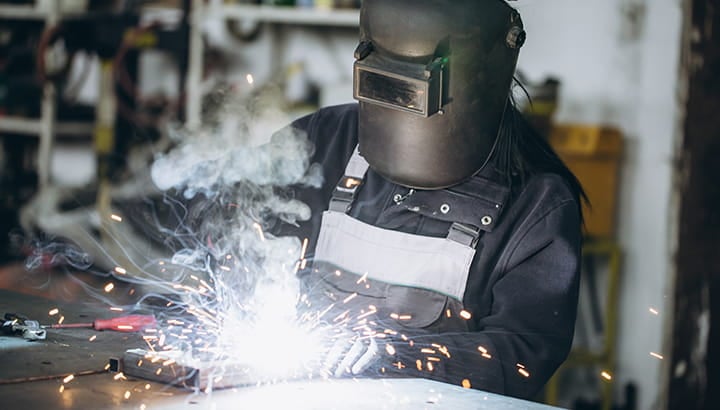
Solution
The welding torch is easily connected to a hi-vacuum extraction unit for capturing most of the hazardous welding fumes.
Advantages
Having the extractor directly on the welding torch ensures that the extraction is always accessible and correctly positioned. Work becomes flexible and the capture rate is excellent.

Solution
The arms are connected to a vacuum filter system that removes contaminants from the extracted air.
Advantages
The extraction arms are flexible, easy to position and are not in the way during work. There is no impact on the welding process. Capture rate is excellent.
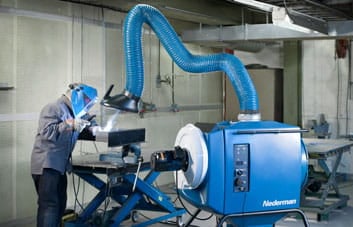
Solution
Mobile fume extractors are common solutions for industrial weld fume extraction needs and can be moved around the workshop or factory to wherever fume extraction is needed.
Advantages
If welding work takes place at different locations, a mobile solution is the best choice. Mobile extraction units are flexible, easy to position and not in the way during work. There is no impact on the welding process.
View our complete range of portable and compact fume extraction systems.

Solution
The tables have integrated extraction of fumes, dust and other particles generated during welding, grinding, polishing, and similar applications.
Advantages
This solution is suitable for fixed workplaces. The extraction takes place over the surface area of the table meaning you don't need to adjust the extraction point. Great capture rate.
Learn more about our welding and grinding table for fume extraction.
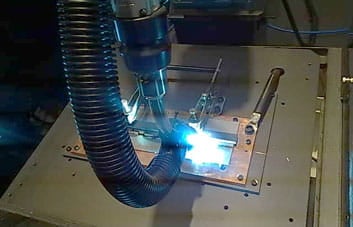
Welding operations using automated welding equipment require careful monitoring. Operators and service personnel overseeing robotic welding equipment can be subject to residual fumes and need to be protected in a similar way to manual workers. Nederman solutions for automatic welding processes include both on torch-extraction and extraction systems with hoods.
Solution
Extraction nozzles can be mounted directly on the welding machine which protects sensitive electronics and operators who oversee the facility.
Advantages
This solution is available in two variants: Extractor mounted on the welding nozzle or a hood that is mounted above the robot. Both solutions provide great capture rates.
For fume applications with multiple welders or increased fume generation rates, stationary fume extraction systems offer increased capacity and performance to handle these needs. These systems generally are designed to support multiple source capture devices that are connected through duct to a central filter that has the capacity and capability to handle the increased fume load. Stationary fume extraction systems are also recommended for machine tool or automated processes including laser, plasma cutting and robotic welding.
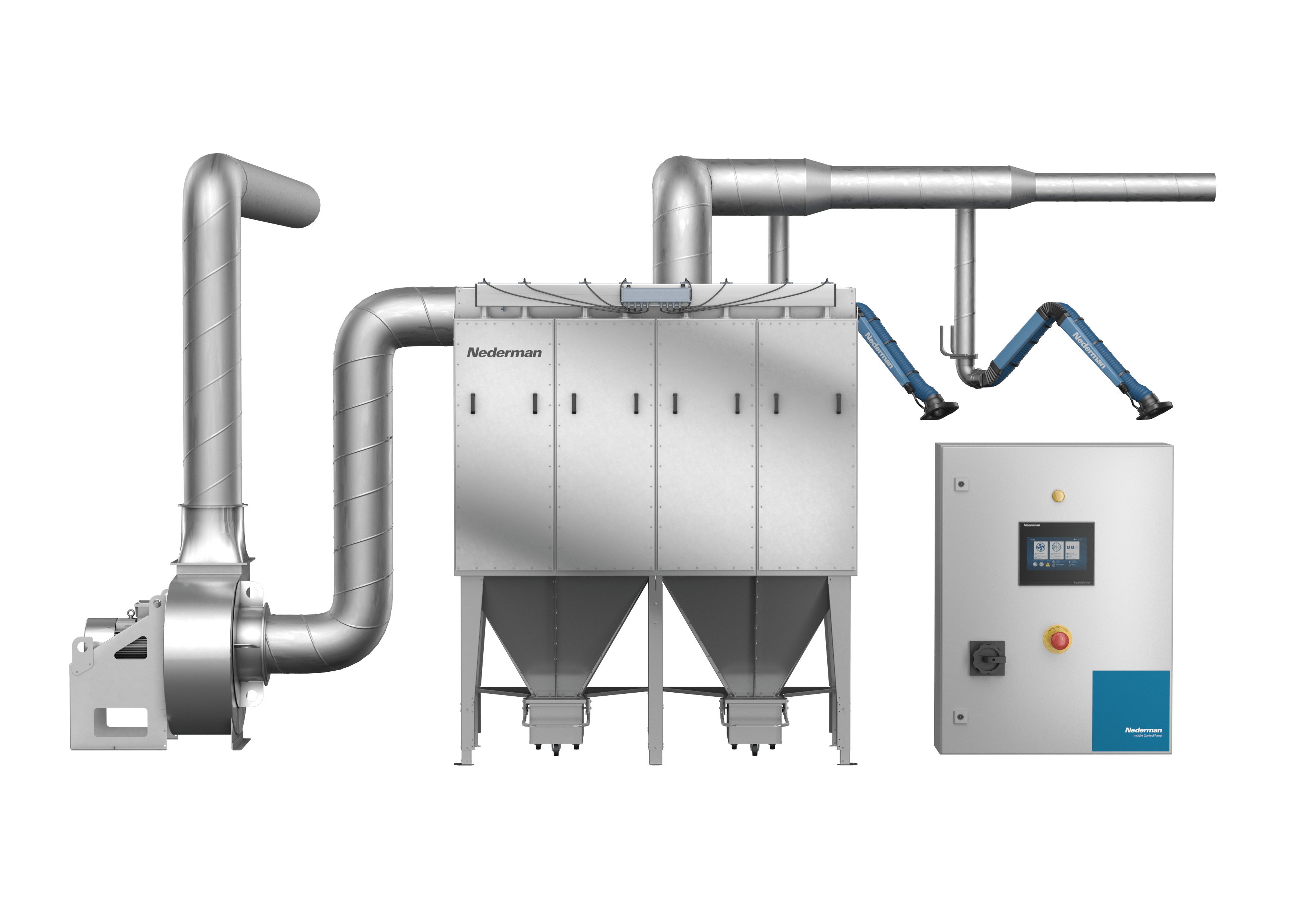
Solution
The MCP SmartFilter is a modular, reverse pulse-jet, cartridge fume and dust collector suitable for the most challenging welding or thermally generated fume applications, including plasma/laser cutting tables or multiple welding hoods. The MCP features the latest in filtration technology with Nanofiber filter media, IntelliPULSE filter cleaning and IoT-ready Insight Control Panel and configurable for a variety of applications.
Learn more about the MCP SmartFilter for central fume or dust extraction.
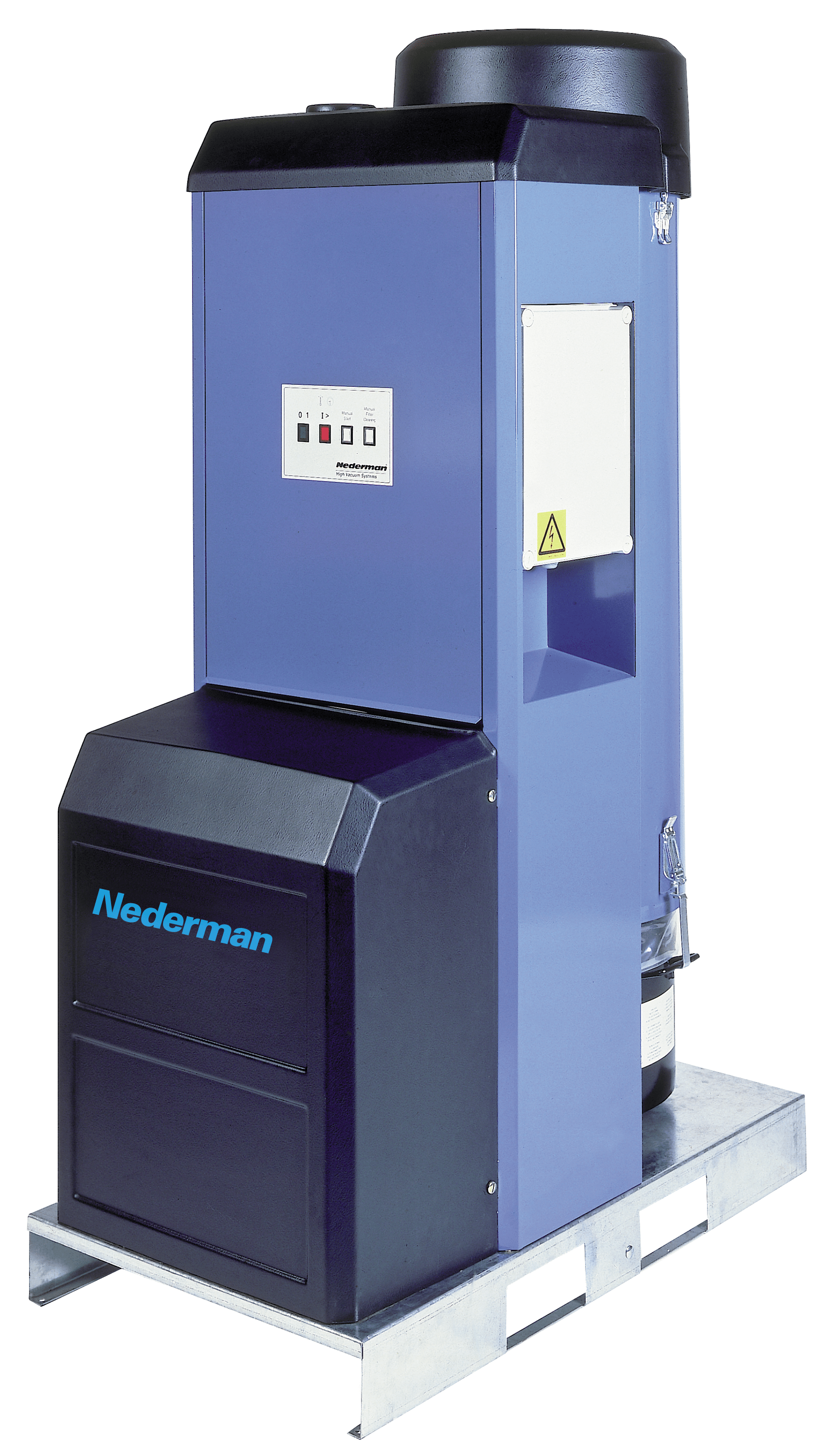
The L-PAK and E-PAK are hi-vacuum fume extraction systems that serve up to six on-torch extraction points making them a great solution for central filters that serves multiple weld stations or robotic welding cells. These units have adjustable airflow, are energy efficient and have low noise levels. Each unit has a compact design to reduce floor space and has fork truck slots in the base so it can be move if required.
Learn more about these hi-vacuum fume extraction units:
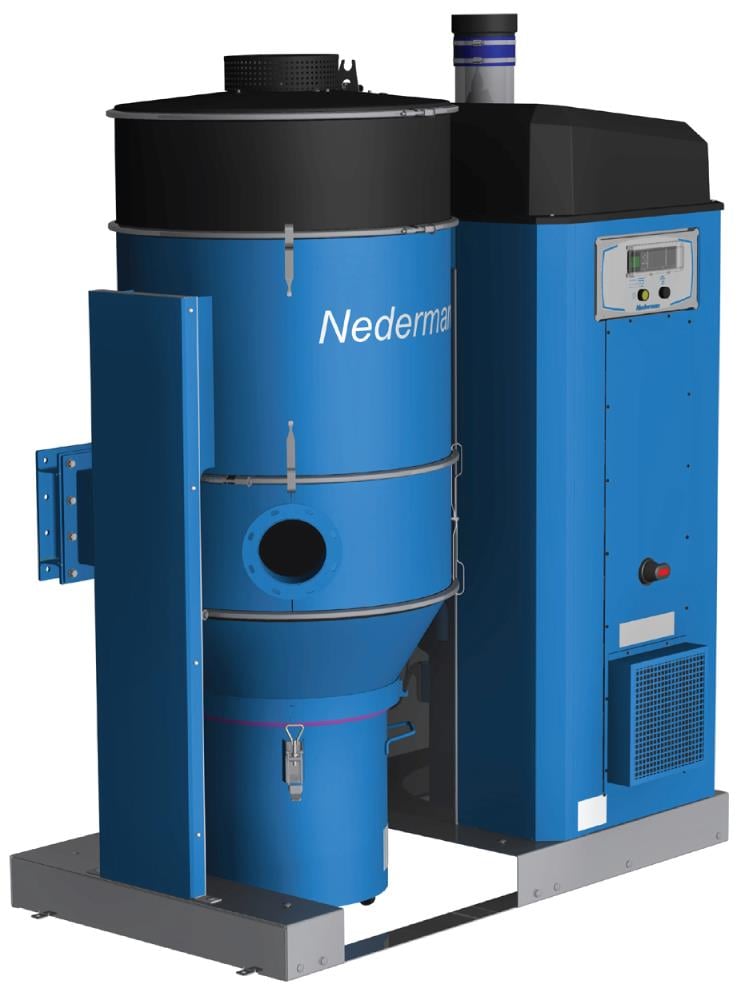
The FlexPAK is an advanced hi-vacuum fume extractor suitable for multiple on-torch extraction points for fume guns or robotic welder. The filter includes a PLC control and sensors that monitor key operating parameters including filter life, airflow and dust bin level to automate operation for improved energy efficiency and productivity. The FlexPAK is also Insight (IIoT) ready and can be monitored remotely.
Learn more about the FlexPAK SmartFilter for hi-vacuum fume extraction.
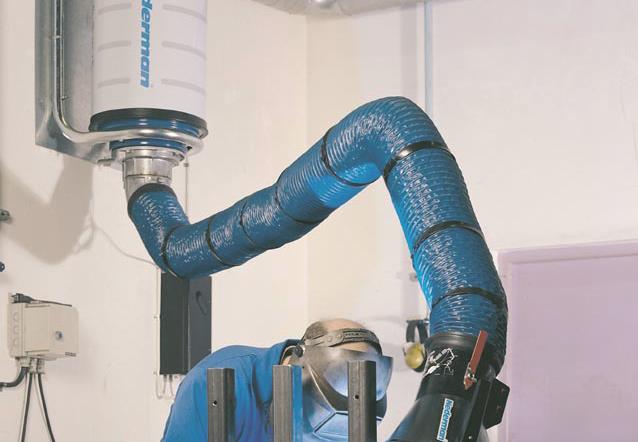
The MFS Filter Kits are a modular system that can build economical solutions for light, intermittent duty welding or soldering applications. The modular system is suitable for small operations to large scale manufacturing. Fans can be installed directly to the filter frame making the installation quick and easy. High Efficiency (HEPA) and carbon filters are also available for increased safety.
Learn more about the MFS Filter Kit for intermittent welding applications.
Contact a local Clean Air Expert to learn more!
The health and safety of welders are paramount considerations, given their elevated risk of serious illness compared to other professions. Welding and thermal cutting generate very fine fume particles (< 1μm) that are within the respirable range that can penetrate deep into the lungs and be absorbed into the blood stream. Prolonged exposure to welding fumes pose a wide range of health risks, from mild irritations to severe, long-term conditions like cancer. These risks emphasize the critical nature of effective capture and efficient filtration to reduce worker exposure in accordance with the latest health and safety standards.
Productivity in welding has never been more important due to a variety of factors including welder shortages. Safe and healthy working environments free of welding fume boosts productivity through reduced absences, increased worker focus and motivation. Additionally, uncontrolled welding fumes can accumulate onto machinery, electrical cabinets, and inventory, leading to increased downtime and additional housekeeping costs. Reduced operational costs resulting from improved productivity and reduced downtime are great benefits of effective weld fume control.
Health and safety organizations including HSE, ACGIH, OSHA have established strict permissible exposure limits (PELs) for thermally generated fumes. Even materials once considered less hazardous, such as mild steel, are now widely accepted as carcinogenic and more toxic materials common in stainless steel welding such as hexavalent chromium (Cr(VI)) or manganese have even more stringent exposure limits.
Compliance can best be achieved by applying the Hierarchy of Controls beginning with trying to eliminate or reduce the hazard to acceptable levels. With these being difficult to accomplish in welding applications, engineering controls capturing the fume at or near the source reducing exposure to the welder’s breathing zone is the most common approach to compliance.
As manufacturers invest in welding automation solutions including cobots or robots, it remains important to consider fume extraction when planning for these investments to maintain compliance. While the exposure may be less acute compared to manual welding, higher fume generation rates left unchecked, migrating throughout the factory can expose more workers to the hazards.
In 2019, International Agency for Research on cancer (IARC) classified weld fume as a known carcinogen that can lead to lung cancer.
With our extensive history, experience, expertise and global presence, Nederman can help you create a safe, productive, efficient and compliant welding operation
We have extensive experience of various challenges in the different industries and our experts are very skilled, helpful and professional. With us, you can feel secure that we take care of you and your needs. You are always welcome to contact us regardless if you have a short question or a more complex and complicated one. A warm welcome to Nederman.
Contact us here